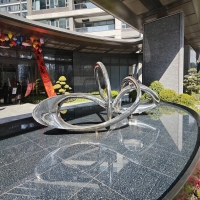Welcome to the website for landscape facilities products and knowledge.
What are the key considerations for ensuring that landscape pet waste bins are resistant to fungal growth?
Maintaining cleanliness and hygiene in public landscapes requires pet waste bins that resist fungal growth. Here are the key considerations to ensure durability and effectiveness:
1. Material Selection: Opt for non-porous, UV-resistant materials like high-density polyethylene (HDPE) or stainless steel. These materials prevent moisture retention, a primary cause of fungal growth.
2. Proper Ventilation: Design bins with adequate airflow to reduce humidity inside. Ventilated lids or side vents help keep the interior dry, discouraging mold and mildew.
3. Regular Maintenance: Implement a routine cleaning schedule using antifungal cleaners. Frequent emptying and washing prevent organic buildup that fosters fungal development.
4. Weatherproof Design: Ensure bins are sealed against rain and moisture. Elevated bases or drainage holes can prevent water accumulation, further reducing fungal risks.
5. User-Friendly Features: Include hands-free mechanisms like foot pedals to minimize direct contact, reducing contamination and moisture transfer.
By prioritizing these factors, landscape pet waste bins can remain hygienic, durable, and resistant to fungal growth, enhancing public health and environmental aesthetics.
Related search:

Recommendation
Abstract art sculpture, stainless steel metal sculpture, large-scale water feature sculpture